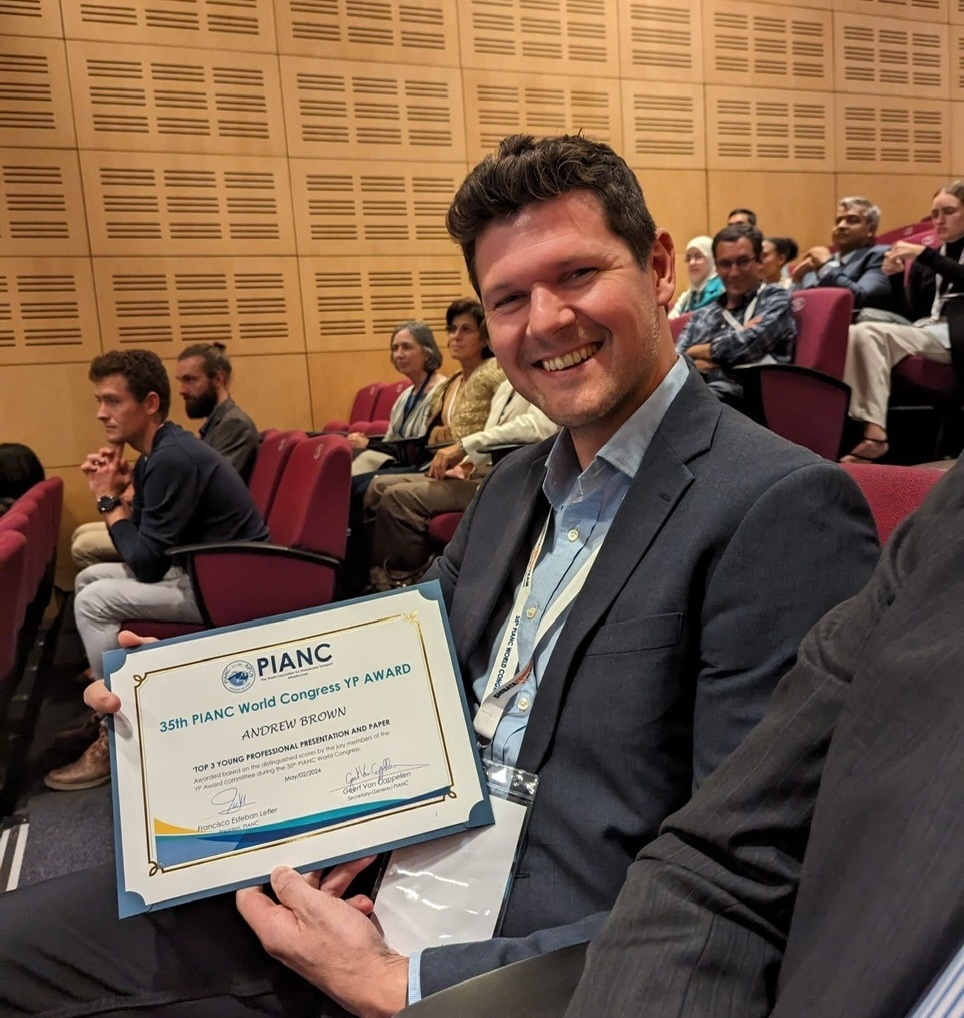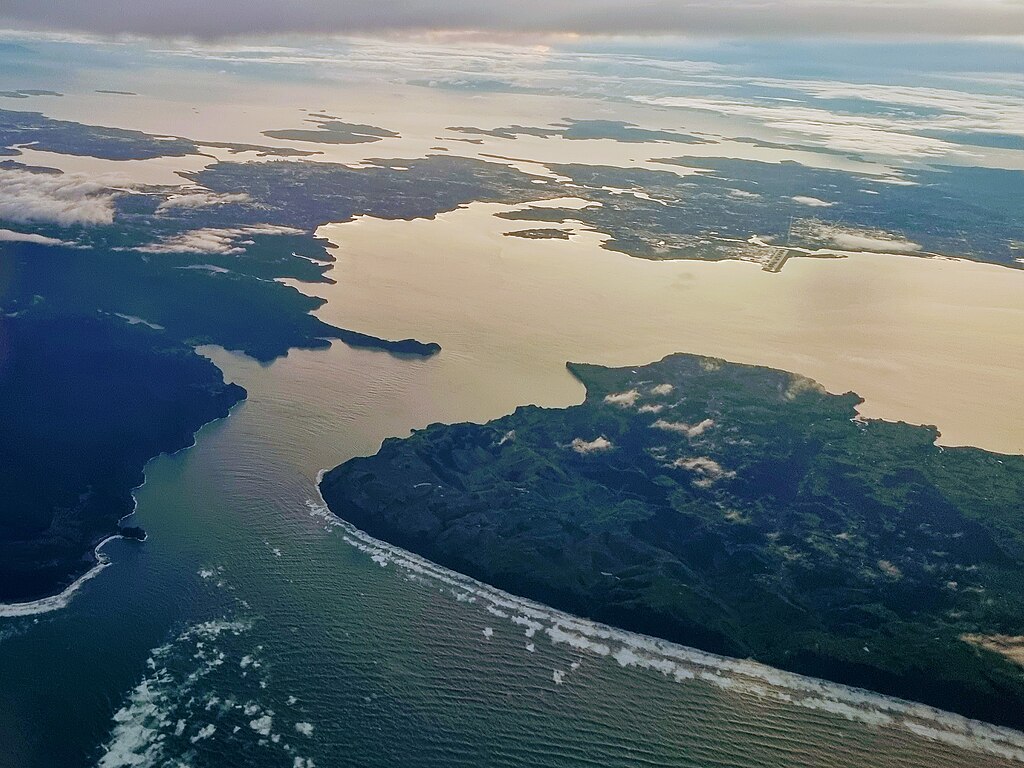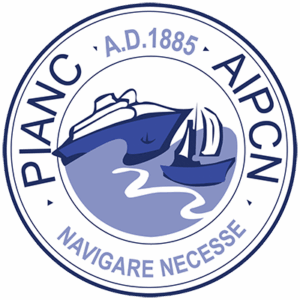“Moving from room to room you were transported from one country to the next. It was a world tour of talks spanning challenges faced across the African port network, dredging projects in Europe, marina development in Brazil, and a greenfield port feasibility in New Zealand! “
Andrew Brown on PIANC World Congress 2024
Congratulations to Andrew Brown, proud coastal engineer at Tonkin + Taylor and hard working Young Professional on the PIANC Aotearoa New Zealand team, for his international award presented by PIANC Young Professionals at PIANC International‘s fabulous World Congress in Cape Town 29 April – 3 May 2024.
Andrew’s award winning research paper was on “Understanding the dynamics of a large and complex ebb tide delta to assess the feasibility of a greenfield port.” (See abstract at the end of this page.)
We asked Andrew about his experiences at his very first PIANC World Congress.
“When Luke Campbell (Chair of PIANC AU-NZ) introduced me to Francisco Esteban Lefler (President of PIANC International) on one of the first days, Francisco asked me if I’d been to a World Congress before. No, I replied, but I’ve been to the PIANC APAC conference. With a slight chuckle Francisco replied, oh it’s very different!
So, what differentiates a World Congress from a conference?
Size – these things are big! With over 700 attendees and a jam-packed five-day schedule it was on a scale I’d not seen before. Split over six parallel sessions with up to 13 talks in each you were spoilt for choice but needed to plan your moves carefully. Even more so with the venue being shared with an international Comic-Con event! As tempting as mingling with superheroes was, I managed to stick to the congress (mostly).
International – with all continents represented (bar Antarctica) it was truly an international affair. Moving from room to room you were transported from one country to the next. It was a world tour of talks spanning challenges faced across the African port network, dredging projects in Europe, marina development in Brazil, and if you were lucky enough to attend my talk, a greenfield port feasibility in New Zealand!

Andrew Brown in Cape Town with his PIANC International World Congress YP Award for his paper: ‘Understanding the dynamics of a large and complex ebb tide delta to assess the feasibility of a Greenfield port.’
Highlights of the Week
“It was a whirlwind of a week but if I had to choose some highlights they would be:
Young Professional Commission – The day before the congress I joined the YPCom for the 42nd delegates meeting. This was a great opportunity to meet counterparts from across the globe to share progress, acknowledge achievements and discuss common challenges. It was a proud moment when Lisa Wynne (YPCom AU-NZ Chair) and I realised how well developed our region is by comparison. A big thanks to the AU-NZ crew who have paved the way in previous years to put us in this position. With all YP events it’s customary to finish with some team building. I’m not sure who picked lawn bowls, but it was another opportunity for AU-NZ to shine!
Presentations – There was a great mix of inspiring plenary speakers, informative presentations on recently released or upcoming working group publications, along with case studies and innovations in the industry meaning there was something for everyone.
Session chair – I became an unexpected session chair after receiving a late-night email starting ‘Thank you for volunteering…’. I was more than happy to help and enjoyed introducing the presenters, fielding questions, and in some cases settling nerves.
Gala dinner – A memorable occasion, not only for the historic wine estate setting, food, and company but also the dance floor antics, particularly the star of the show providing the best marketing for next year’s Biannual Technical Visit in Busan, South Korea, from Hyun (YPCom Deputy Chair) with his flawless performance of Gangnam style.
Technical tour – Up bright and early following the gala dinner I headed to the SA Council for Scientific and Industrial Research (CSIR)’s Coastal and Hydraulics physical modelling laboratory for a tour of their facilities. Starting my career as a physical modeller myself, it was great to see their setup and see some models being tested.
YP Award – The icing on the cake was of course winning 2nd place in the young professional award, ‘given for outstanding technical paper and presentation at the Congress’. It was a surprise and privilege to take stage at the closing ceremony to receive this. “
“I became an unexpected session chair after receiving a late-night email starting ‘Thank you for volunteering…’.”
Andrew Brown



Would you recommend a World Congress?
“I would highly recommend a PIANC World Congress to those who have not been to one.* It’s at a different scale to your usual conference and is truly an international gathering bringing together PIANC members from far and wide to share knowledge across the full breadth of technical interests within the waterborne transport industry.
A big thank you to PIANC AU-NZ and to Tonkin + Taylor Ltd for assisting with my attendance, it was a fantastic opportunity and I’m extremely grateful for the support.”
NB: Next World Congress is in 2028 in Antwerp, Belgium!
See here for HQ collated images of World Congress 2024 on YouTube.
Abstract of Andrew’s award winning paper:
Understanding the dynamics of a large and complex ebb tidal delta to assess the feasibility of a Greenfield port.
The Manukau Harbour is located on the West Coast of New Zealand’s North Island in the Auckland Region. It has been identified as a potential greenfield port location to replace the cargo operation of the Ports of Auckland, which is located on the East Coast within the Waitematā Harbour.
Exposure to large and persistent swell from the Southern Ocean and Tasman Sea, high tidal range, fast tidal currents, and a very large and shallow ebb tidal delta at the Manukau Harbour entrance present several challenges to opening and maintaining a navigation channel in this location. To test the feasibility of the proposal, an in-depth understanding of the ebb tidal delta dynamics and sediment transport mechanisms was needed.

Using data collected from the field, satellite imagery, and a combined analytical and numerical modelling approach we have estimated capital dredge volumes and importantly rates of sediment infill to the channel at differing temporal scales from individual storms to annual rates and decadal evolution. It has been shown that the ebb tidal delta has a rotational morphology over an approximate ~25-year cycle which can affect the capital dredge volumes by up to 10M m3 depending on the position of the channel and banks within the cycle. A net movement of sediment from the south to the north through longshore processes have been shown to contribute 1.5M m3 / year to the system, however, it is the sediment recycled around the ebb tidal delta through wave and tidal flows that govern the maintenance dredge requirement and therefore the viability of the harbour serving as a port location.
Keywords: ebb tide delta, dredging, sediment infill
Paper Authors:
Andrew Brown, T Shand, R Reinen-Hamill, P Quilter, S McCarter Tonkin & Taylor Ltd, New Zealand; J Valstar, G Britton, F Hoogerwerf, B van Dijk, Royal HaskoningDHV Netherlands; M Oxley Pacific Marine Management, New Zealand, M Ford, University of Auckland, New Zealand A Berthot, H Watson, M Cussioli, MetOcean Solutions, New Zealand, C Gill, R Parker, Ministry of Transport, New Zealand

